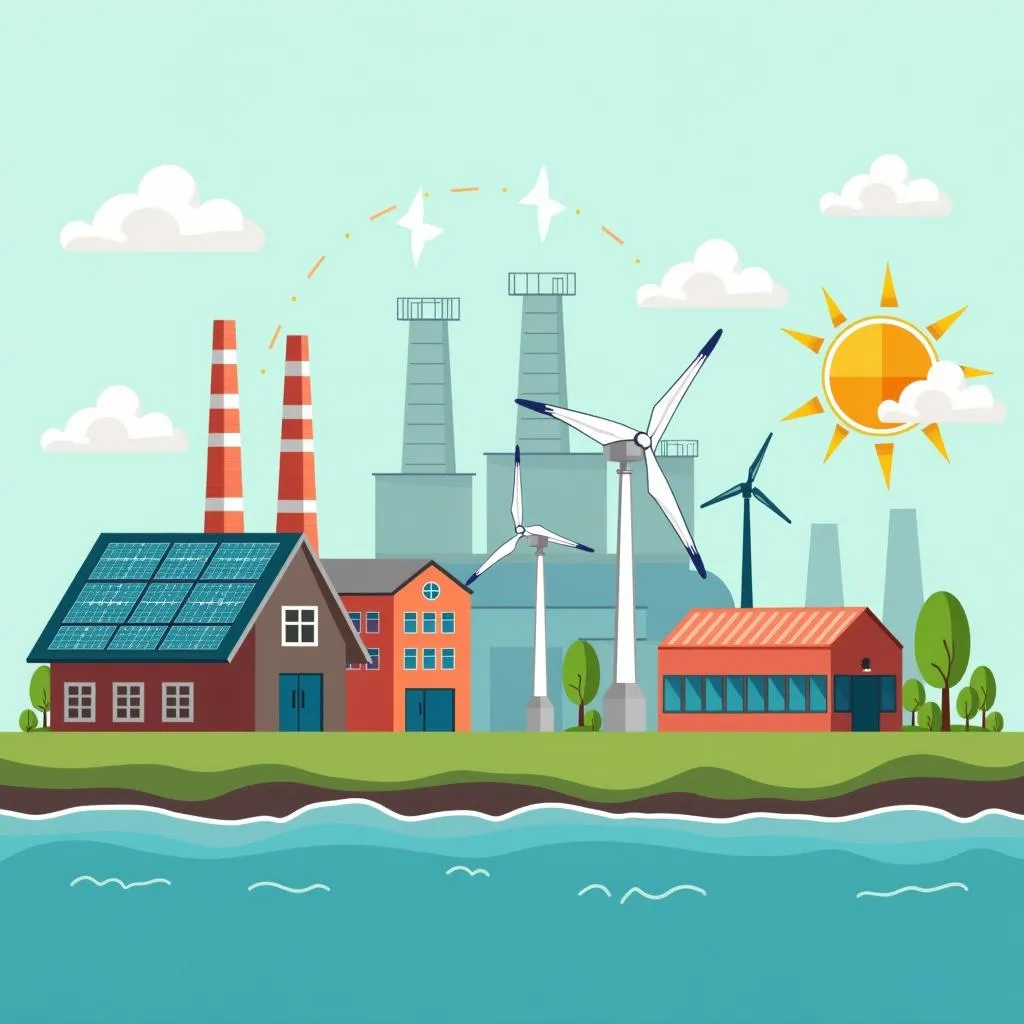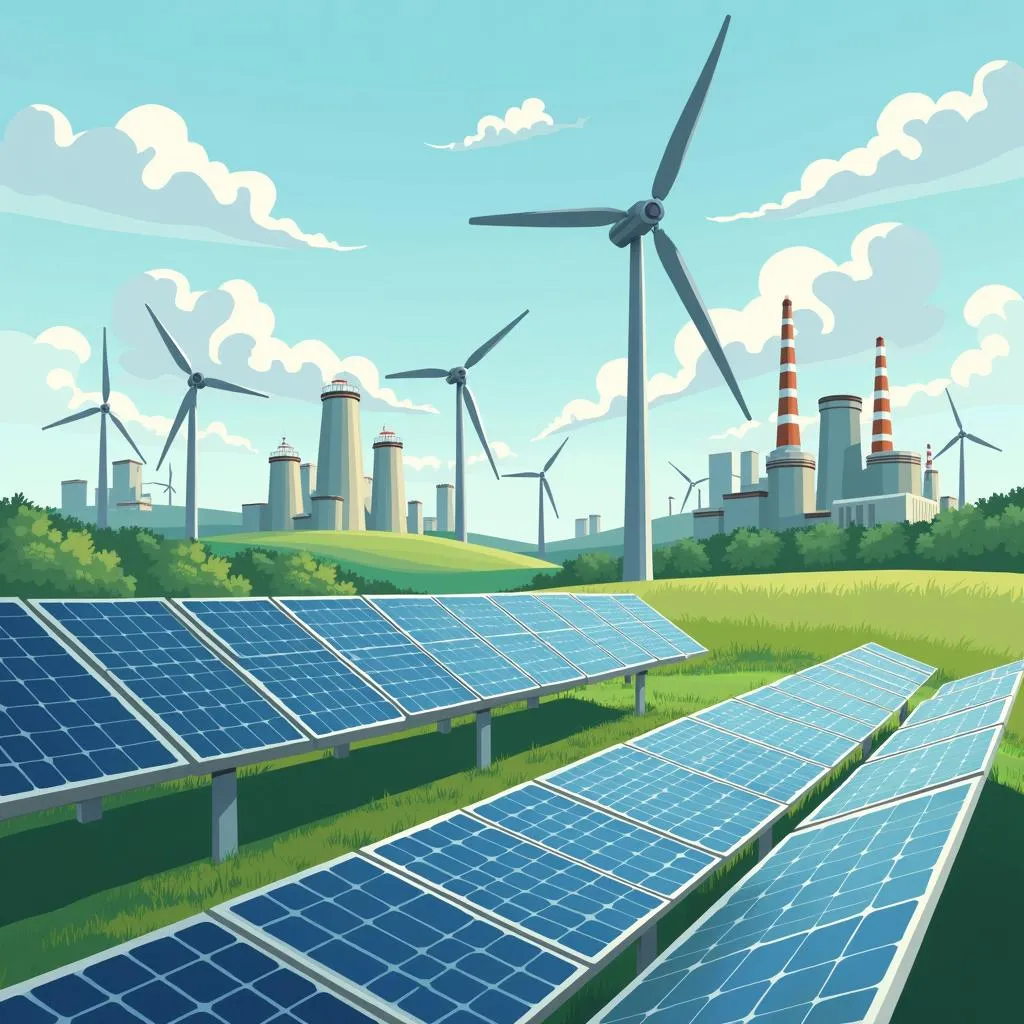In this article, you will find sample Summarize Written Text tasks on clean energy technology, model answers with analysis, and key vocabulary to boost your preparation for the PTE exam.
Sample Summarize Written Text Questions on Clean Energy Technology
Task 1: Clean Energy Technology Adoption in Industrial Sectors
Prompt:
The industrial sector is one of the largest consumers of energy and produces a significant amount of greenhouse gases. Adopting clean energy technologies, such as wind, solar, and geothermal power, has become vital. These technologies help industries reduce not only their carbon footprint but also energy costs in the long term. Furthermore, moving towards energy-efficiency programs can increase productivity, as studies have shown that cleaner technologies result in greater operational efficiency. Despite the initial costs involved, governments worldwide are supporting these initiatives through subsidies and regulations. Such efforts are crucial for combating global climate change and ensuring sustainable economic development.
Task: Summarize the paragraph in one sentence.
Band 90 Model Answer:
Adopting clean energy technologies is important for industries due to their potential for reducing emissions, lowering energy costs, and improving operational efficiency, as governments worldwide are offering support to promote these sustainable initiatives.
Analysis:
- Content: This response captures the key concepts: the adoption of clean energy technologies, environmental and economic benefits, government support, and global importance.
- Form: The sentence is within the word limit and grammatically correct.
- Grammar: Properly structured with no errors.
- Vocabulary: Diverse and appropriate use of terms like “adopting,” “emissions,” and “sustainable initiatives.”
- Spelling: No spelling errors.
 Industrial energy sectors adopting clean energy
Industrial energy sectors adopting clean energy
Band 75 Model Answer:
Industries benefit from adopting clean energy technology which reduces emissions and lowers energy costs, as governments provide global support through subsidies.
Analysis:
- Content: The summary is fairly accurate but misses some details on operational efficiency and global climate change.
- Form: The sentence maintains the word count within the required range.
- Grammar: Mostly grammatical with a clear structure.
- Vocabulary: Less varied compared to the previous example but still appropriate.
- Spelling: No spelling errors.
Band 60 Model Answer:
Industries using clean energy reduce expenses and lower carbon emissions.
Analysis:
- Content: This sentence omits some important information such as government support and operational efficiency.
- Form: The sentence is concise but does not cover all the key ideas.
- Grammar: Simple sentence structure with no mistakes.
- Vocabulary: Basic word choices, lacking depth.
- Spelling: Correct spelling.
Task 2: The Role of Clean Energy in Industrial Growth
Prompt:
Renewable energy is increasingly becoming a driving force in the industrial sector, offering new opportunities for both innovation and cost savings. As industries implement technologies such as solar panels, bioenergy, and hydrogen cells, they experience improvements in energy security and environmental sustainability. Moreover, many governments are pushing these industries to adopt cleaner energy solutions through incentive programs, subsidies, and tax benefits, enabling a fair transition towards green energy.
Task: Summarize the paragraph in one sentence.
Band 90 Model Answer:
Clean energy technologies provide industries with opportunities for innovation, cost savings, energy security, and environmental benefits, with further governmental incentives encouraging their widespread adoption.
Analysis:
- Content: Captured all key ideas, including innovation, cost savings, and governmental incentives.
- Form: Clear, precise, and within the word limit.
- Grammar: Well-constructed and coherent with proper use of commas.
- Vocabulary: A good range of formal vocabulary such as “innovation,” “widespread adoption,” and “incentives.”
- Spelling: No errors.
 Clean energy in industrial growth with governmental incentives
Clean energy in industrial growth with governmental incentives
Band 75 Model Answer:
Using clean energy products helps industries save money while improving the environment, thanks to government incentives.
Analysis:
- Content: Covers key points about saving money and benefiting the environment, though lacks details on energy security and innovation.
- Form: Simple but grammatically correct.
- Grammar: No mistakes.
- Vocabulary: Reasonable, though more basic.
- Spelling: Correct.
Band 60 Model Answer:
Clean energy helps industries save money and is supported by governments.
Analysis:
- Content: Misses several important details such as innovation and energy security.
- Form: Short and oversimplified, not offering much depth.
- Grammar: Simple but correct.
- Vocabulary: Vocabulary is overly simplistic.
- Spelling: No errors.
Important Vocabulary for Clean Energy & Industrial Growth
Here are some important words and phrases that frequently appear in discussions about clean energy technology in industries:
-
Emission [ɪˈmɪʃən]: (n) the act of releasing something, particularly gas or radiation.
Example: Reducing carbon emissions is crucial for industrial sustainability. -
Incentive [ɪnˈsɛntɪv]: (n) a thing that motivates or encourages one to do something.
Example: Government incentives help industries adopt green technologies. -
Subsidy [ˈsʌbsɪdi]: (n) financial assistance provided by the government to support industries.
Example: Renewable energy subsidies and market growth have increased exponentially.
Related link: Renewable energy subsidies and market growth -
Renewable [rɪˈnjuːəbəl]: (adj) a resource that is capable of being replenished naturally over time.
Example: Solar and wind energy are examples of renewable energy sources. -
Operational Efficiency [ˌɒpəˈreɪʃənl ɪˈfɪʃənsɪ]: (n) performing tasks in a cost-effective and time-efficient manner.
Example: Clean energy solutions improve operational efficiency in many industries. -
Sustainability [səˌsteɪnəˈbɪlɪti]: (n) the ability to be maintained at a certain rate or level.
Example: Sustainability is a key consideration for many industrial sectors. -
Carbon Footprint [ˈkɑːbən ˈfʊtprɪnt]: (n) the total amount of greenhouse gases produced by human activities.
Example: Reducing carbon footprints is essential for combating climate change. -
Hydrogen Cell [ˈhaɪdrədʒən sɛl]: (n) a technology that produces electricity from hydrogen fuel.
Example: Hydrogen cells are gaining popularity as a clean energy source. -
Geothermal [dʒiːoʊˈθɜːrml]: (adj) relating to the heat produced by the earth.
Example: Geothermal energy is a reliable source of renewable power for industries. -
Transition [trænˈzɪʃ(ə)n]: (n) the process or period of changing from one state or condition to another.
Example: Industries are making a gradual transition from fossil fuels to green energy.
Related link: Green energy initiatives in industrial sectors
Conclusion
Summarize Written Text is an essential part of the PTE exam, testing your ability to concisely present the main ideas of a text. Topics like “clean energy technology in industries” are becoming increasingly prominent, so ensure you practice thoroughly with such themes to improve your performance. By studying the example tasks and answers provided, you will be better prepared for both the content and structure required by the PTE.